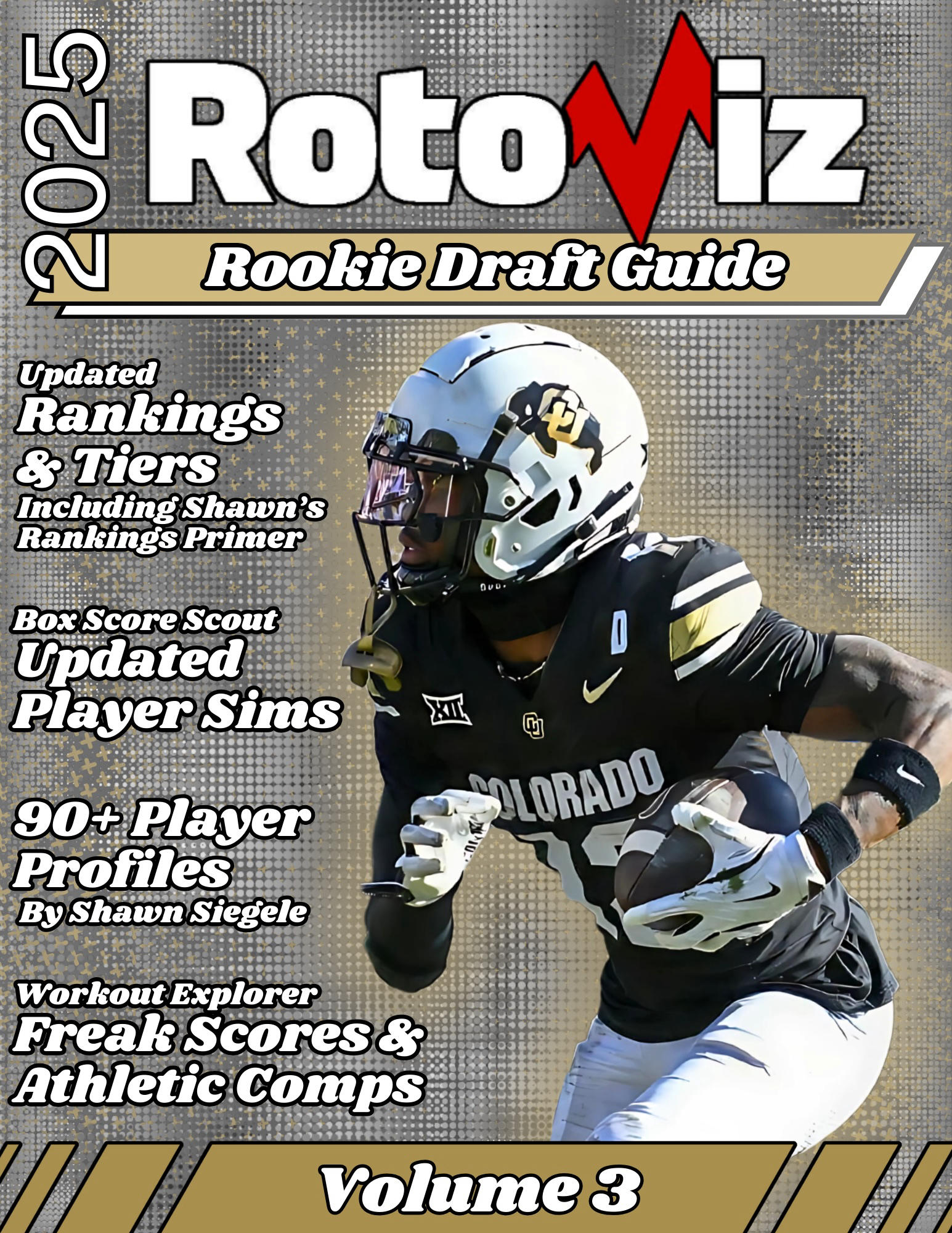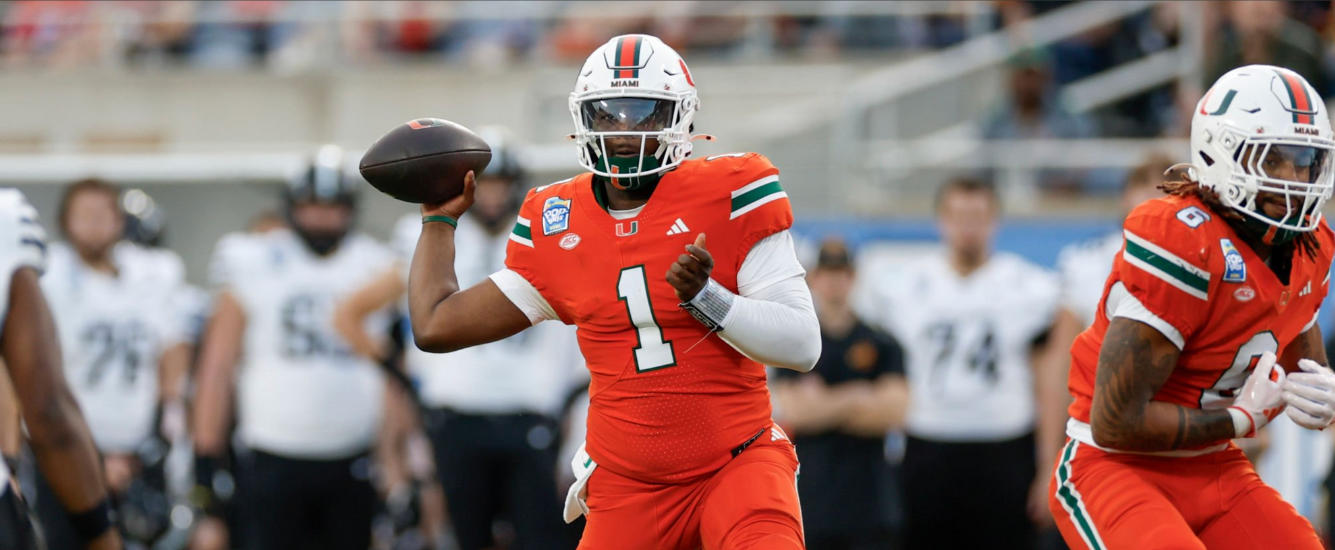Check out all of RotoViz’s coverage of the 2025 NFL Draft!
- Dynasty Rookie Rankings Updates – Shawn Siegele
- WR Prospect Lab Post-Draft Updates – Blair Andrews
- RB Prospect Lab Post-Draft Updates – Blair Andrews
- Landing Spot Instant Reactions – Kevin Szafraniec
In dynasty rookie drafts over the past few seasons, RotoViz readers have been able to find success by bypassing mediocre quarterbacks in favor of elite talent at other positions. However, we may not have much of a choice but to draft QBs in 2026 with no shortage of question marks at the other skill positions. While the QB class may not end up being elite across the board, the large variety of archetypes and skill sets should result in the 2026 rookie class being considerably deeper at QB than dynasty managers are used to in most years.
The 2026 rookie landscape will undoubtedly change in ways we cannot predict between now and next May, but having a general idea of how things could play out in 2026 rookie drafts is important when fielding offers for future dynasty picks in this year’s draft. Using a combination of advanced metrics, film study, and data analysis, we will attempt to predict who the biggest risers and fallers could be over the course of the college football season.
For a refresher on some of the finer points of QB evaluation, we turn to Shawn Siegele’s introduction to the QB section of the 2025 RotoViz Rookie Draft Guide:
Travis May’s research during his time at RotoViz improved the quality of QB evaluation and informs our current approach. By removing plays that inflate QB stats, we can evaluate QBs on relatively similar types of throws. In this publication, we’ll be looking at scheme-adjusted passing numbers, as well as overall performance on third downs and vertical throws.
In this context . . .
- Scheme-adjusted passing attempts will be those throws of at least 6 air yards that do not use jet motion or play action.
- Third-down stats will be on plays with at least 4 yards to gain for the first down (unless otherwise noted).
- Vertical throws will be passes of at least 15 air yards.
SIS also allows us to separate the quality of QB play from the quality of receiver and offensive line play in several ways.
- Independent Quarterback Rating (IQR): This metric improves upon the traditional QB rating by adjusting for elements outside of the QB’s control, like dropped passes, dropped INTs, throwaways, etc.
- On-Target Percentage: This charting metric provides on-target passes divided by total pass attempts with spikes, throwaways, miscommunications, receiver slips, and batted passes removed.
- Points Earned: SIS distributed EPA (Expected Points Added) responsibility by assigning credit to players on the field for a given play. In adjusting QB results, the metric accounts for offensive line play, sacks, off-target passes, dropped passes, dropped interceptions, and quality of opponent. In referencing this stat, we will report points earned per play and will occasionally reference points above average per attempt, which provides a baseline for comparing to an average performance.
While there will not be as much focus on third-down stats and vertical throws in this article, scheme-adjusted (SA) pass attempts, IQR, on-target percentage (OT%), and points earned per play (paPE/P and ruPE/P) will be referenced heavily, as well as adjusted yards per attempt (AYA).
For all of the stats Shawn mentions above and more, go pick up your copy of the 2025 RotoViz Rookie Draft Guide TODAY! With Volume 3 out now, stay up to date on all of the latest information you’ll need to crush your rookie drafts and best ball leagues in 2025!
For a limited time, purchasers of the Rookie Guide can take $29.99 off the first-year cost of a new 1-year RotoViz subscription!













